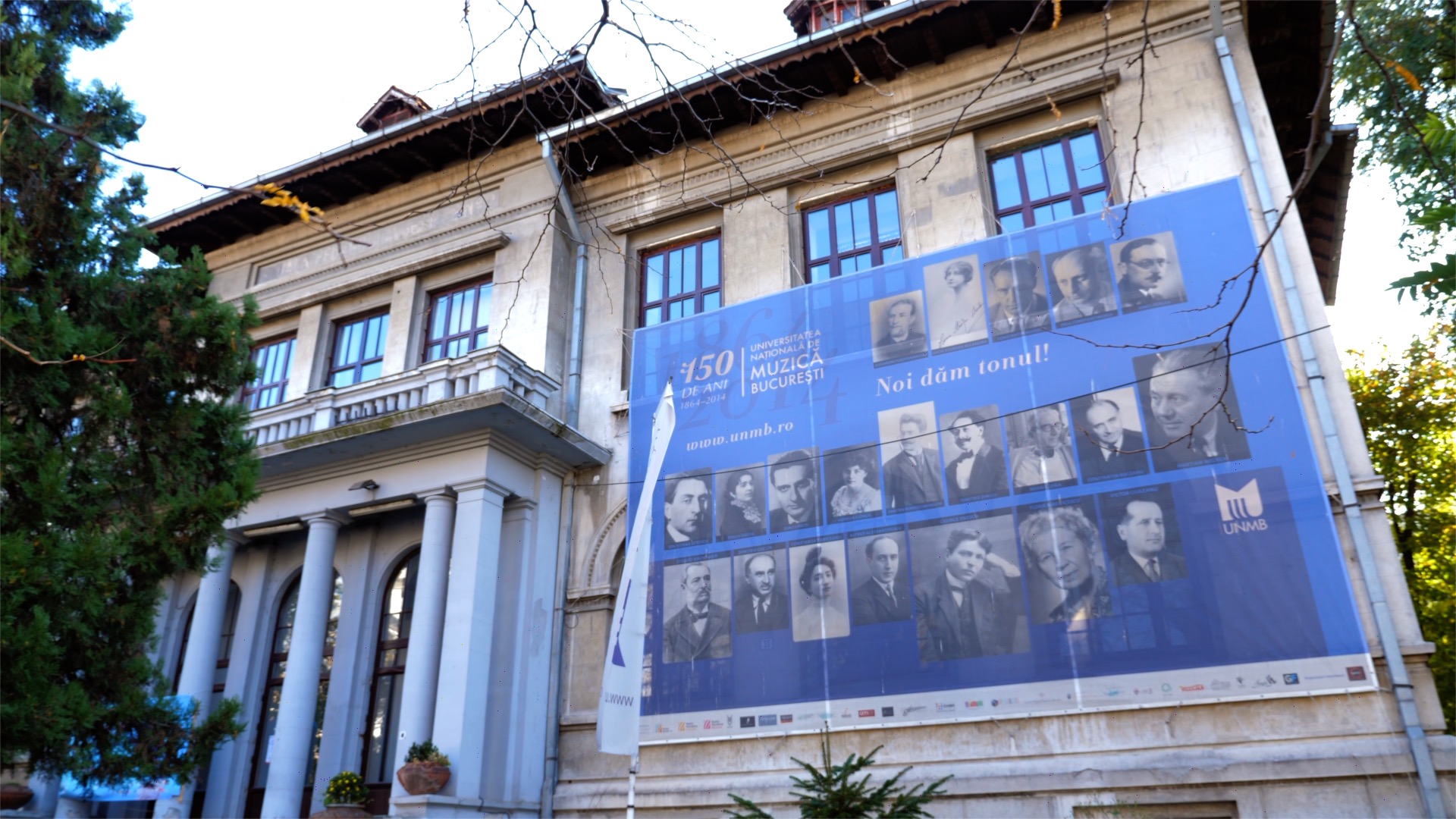The National University of Music Bucharest was established in June 1863 by decree of the Council of Ministers, presided over by Prince Alexander John Cuza. The aim was to create an institution that would merge the country’s two principal schools of music, the Institute of Vocal Music and the School of Instrumental Music, and which would have branches in both Bucharest and Jassy. And so it was that on 5 October 1864 the newly founded Conservatory of Music and Declamation first opened its doors to young men eager to study and achieve fame in the world of music.
Under the directorship of composer Alexander Flechtenmacher, the Conservatory developed into a European university specialising in vocal and instrumental musical education, with separate classes for violin, solfeggio, church choir singing, canto, piano, and harmony. A number of major figures in Romanian and international musical history were to study here and go on to shape the destiny of this famous cultural institution.
In time, the courses taught at the Conservatory expanded and diversified.
- In 1900, the first chamber music course commenced
- In 1905, Alfonso Castaldi began to teach the first composition class
- In the inter-war period, classes in counterpoint, orchestration, aesthetics, and the history of music were introduced
- 17 July 1931 marked a crossroads in the history of the Bucharest Conservatory, when, having met all the conditions to become an institution of higher education, it was renamed the Royal Academy of Music and Dramatic Arts
All this was possible thanks to the efforts of the musicians who taught at the Conservatory, in which they were supported by the foremost figure in Romanian music, who was later to become an honorary professor at the Academy: famous violinist, composer, and conductor George Enescu. The great composer was to inspire generation after generation of students.
In the 1940s, composer Mihail Jora became director of the Royal Academy of Music and Dramatic Arts, bringing to the institution the exigency and rigour for which he was known and maintaining its high level of musical education. In the 1950s, the institution was renamed the Ciprian Porumbescu Conservatory and was divided into two faculties: Musical Performance and Composition, and Musicology, on the one hand, Orchestra Conducting and Pedagogy, on the other.
From 1990 to 1998, the institution was named first the Bucharest Academy of Music and then the Bucharest University of Music. In January 2001, by Government decision, it became the National University of Music Bucharest.
Thanks to its long tradition and excellence in the field, the National University of Music Bucharest is a landmark of musical higher education in Romania.
